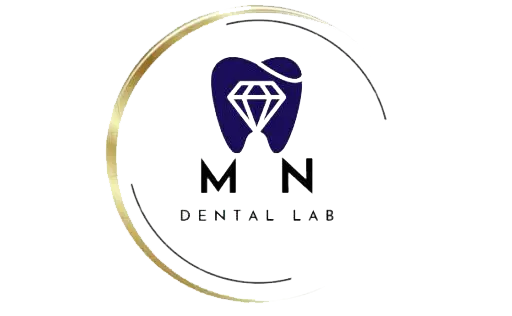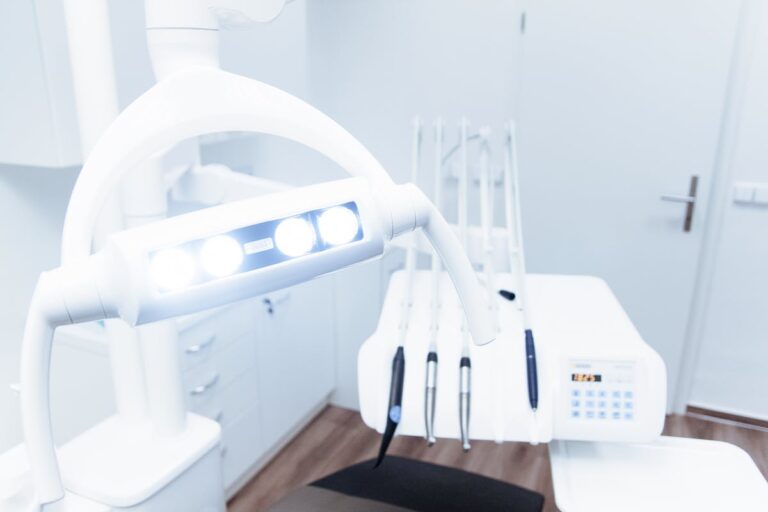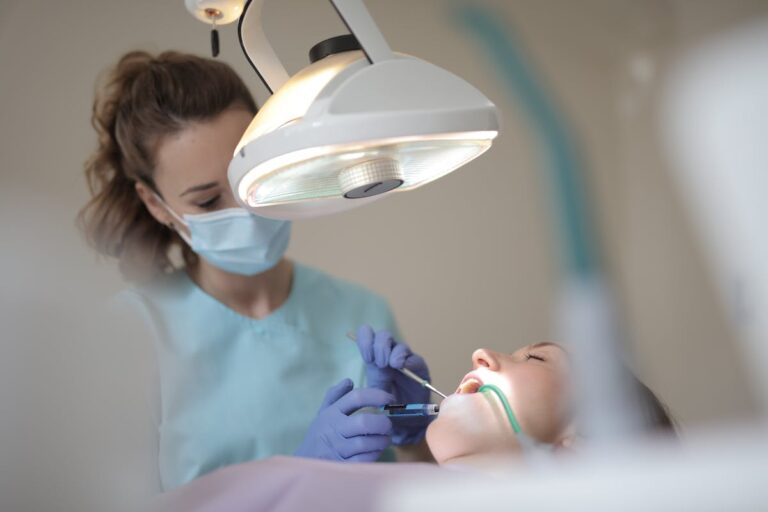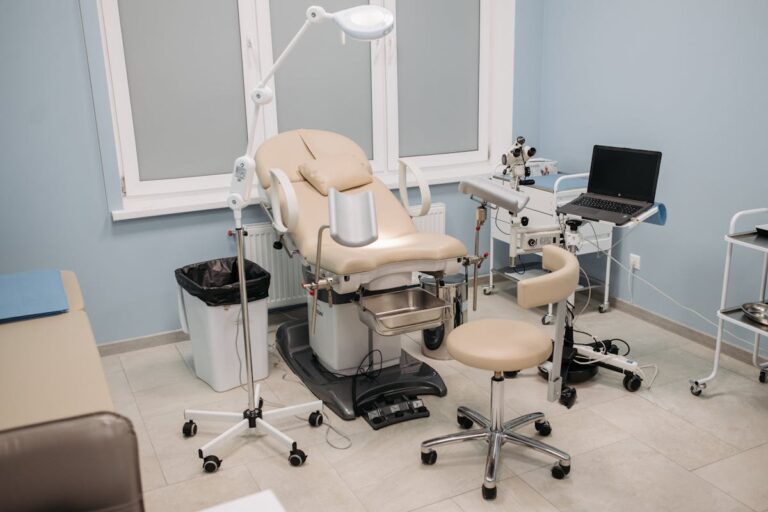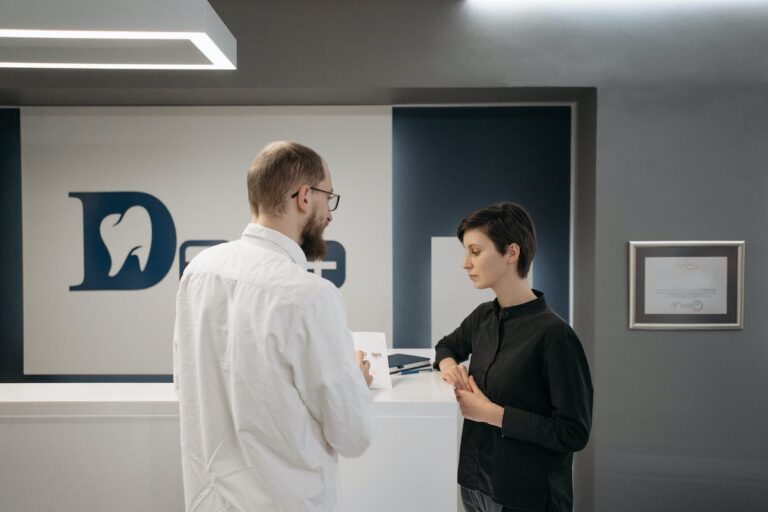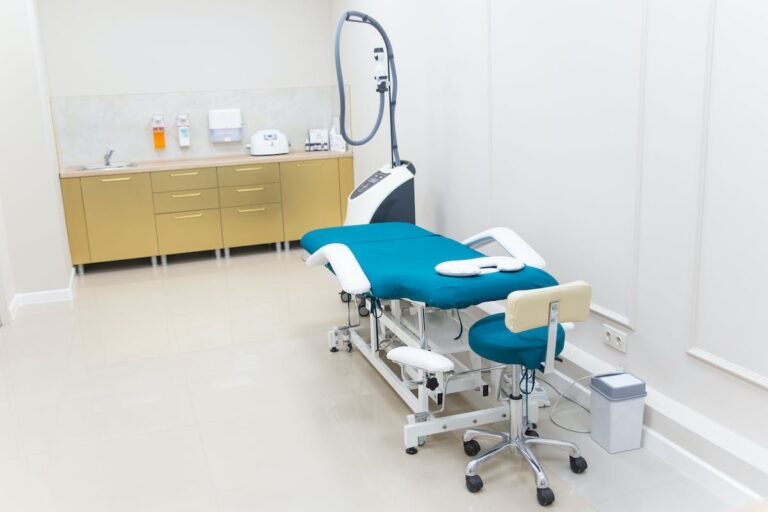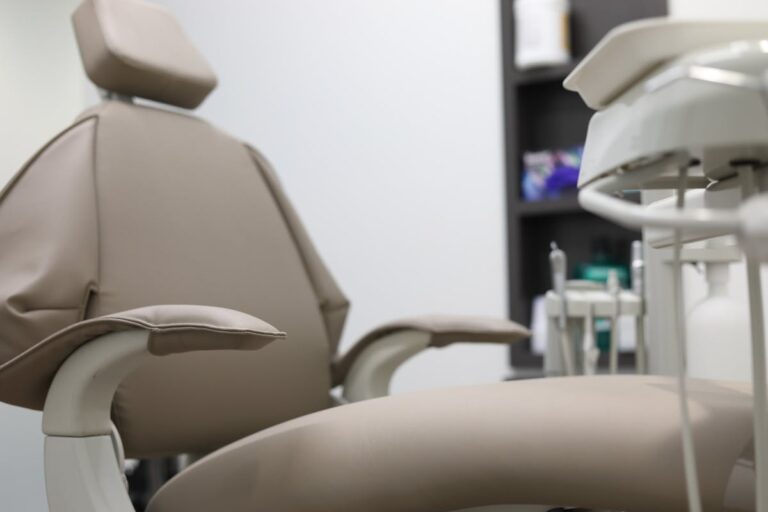Effective communication tools like order tracking and status updates are crucial in dental labs for efficient workflow and improved coordination. Implementing and integrating these systems into labs can pose challenges, but can enhance productivity and client satisfaction. To optimize operations, dental labs should leverage these tools by navigating their complexities. The intersection of dental lab technology and communication provides the answer.
Understanding Dental Lab Communication
Effective communication underpins high-quality dental services, making dental lab and office interactions crucial. It necessitates mastering diverse communication tools and techniques. Dental software fortifies this interaction, streamlining information exchange and data transfer accuracy. It provides real-time updates on order status, material use, and turnaround times, enhancing transparency and efficiency.
The rise in digital communication brings along patient privacy concerns. Dental labs and offices must secure patient data transmission, adhering to regulations like the Health Insurance Portability and Accountability Act (HIPAA). The software should have strong security measures like encryption and secure login protocols to protect sensitive information.
Understanding the software’s functionality and features is vital for maximizing its potential. User training ensures proficient system navigation, decreasing the likelihood of misunderstandings or errors that could affect patient care.
Importance of Order Tracking
Order tracking in dental lab operations is essential for efficient workflow and patient satisfaction. It involves monitoring an order’s journey from receipt to delivery, with detailed documentation at each stage.
Transparency in order tracking allows for prompt detection and rectification of potential issues, fostering trust with clients through clear communication of order progress.
Order tracking also engages customers by allowing them to monitor their order, enhancing satisfaction and encouraging repeat business. It results in operational efficiency, increased customer confidence, and business growth.
How Status Updates Enhance Efficiency
Status updates enhance dental lab efficiency by providing real-time progress insights on orders. This visibility aids informed decision-making, streamlines workflows, and minimizes errors. It also fosters transparency, preventing delays and bottlenecks, thereby improving efficiency metrics.
Status updates also elevate patient satisfaction. By being informed, patients can manage expectations, reducing complaints and inquiries. Thus, these updates contribute to both operational efficiency and the overall patient experience.
Key Features of Tracking Systems
Key features of dental lab tracking systems encompass system customization, patient data privacy, real-time tracking, and system integration for data unification.
- System Customization: Dental labs demand tailor-made systems to manage patient records and inventories, enhancing operational efficiency.
- Patient Data Privacy: The rise in patient data security concerns necessitates robust mechanisms in these systems, with non-negotiable compliance to HIPAA regulations.
- Real-Time Tracking: Transparent real-time order tracking aids dental practitioners in keeping patients updated on treatment progress.
- System Integration: Seamless integration with existing lab and office management systems is vital to avoid data silos and maintain a unified operations view.
Streamlining Workflow in Dental Labs
The optimization of dental lab operations hinges on streamlined workflows, achieved through the strategic integration of dental software and comprehensive lab personnel training.
Dental software automation enhances productivity by reducing human error and mundane tasks. Key software components include digital imaging and CAD/CAM systems, which accelerate dental prosthetics creation with increased speed and accuracy. This software also centralizes data management for efficient patient information tracking and retrieval.
Training for lab personnel is equally vital, enabling the maximization of software integration benefits for efficiency improvement. Regular updates on software features maintain staff proficiency and promote the adoption of digital tools best practices, thus optimizing workflow.
Case Study: Successful Tracking Implementation
In the dental lab sector, Alpha Dental Technologies optimized workflow through a successful tracking system.
- Need Identification: Alpha Dental pinpointed the necessity for an enhanced tracking system for order management and customer communication due to growing workload and operational complexity.
- Implementation Challenges: The transition encountered obstacles including system compatibility and staff resistance, yet the leadership remained focused on the potential long-term benefits.
- Training: A detailed training plan was curated to ensure employee proficiency in the new system, encompassing workshops, practical sessions, and ongoing support.
- Success Evaluation: Following implementation, the lab experienced augmented workflow efficiency, order precision, and customer satisfaction, attributed to the tracking system’s transparency and accuracy.
This case underscores the transformative power of a well-executed tracking system in dental labs, notwithstanding implementation challenges and the requirement for comprehensive training.
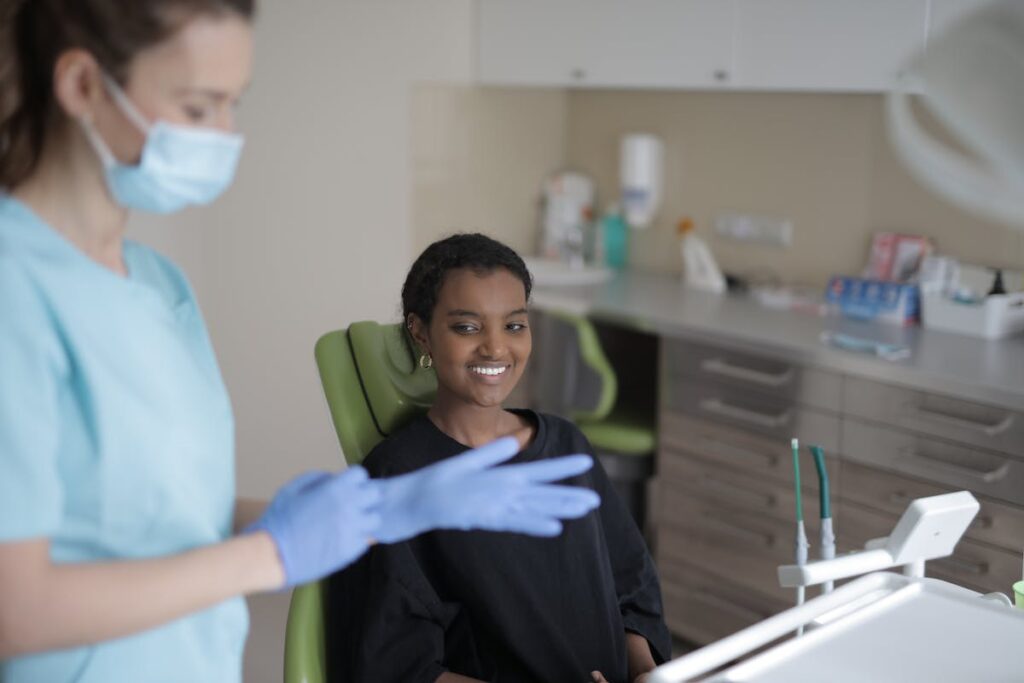
Improving Client Communication
Dental labs can enhance client communication via client feedback mechanisms and staff communication training. Client feedback mechanisms like customer surveys and complaint systems allow labs to gather crucial insights on service gaps. This feedback, once analyzed, can pinpoint improvement areas. Communication training programs for customer-facing staff can foster effective client interactions, expectation management, and professional handling of concerns. Both strategies serve the broader goal of strengthening client communication in dental labs.
Reducing Errors With Digital Tracking
Digital tracking in dental labs reduces errors and enhances precision by leveraging advanced technology. Here’s how:
- Data Validation: Identifies inaccuracies in real-time, prompting immediate correction.
- Workflow Automation: Minimizes human error by automating processes, eliminating oversight and communication lapses.
- Record Keeping: Maintains up-to-date, accurate procedure records, enabling traceability and verification.
- Order Management: Streamlines orders, ensuring accurate processing, tracking, and completion.
Investing in Dental Lab Technology
Modern dental facilities prioritize efficient, precise operations through strategic investments in advanced dental lab technology. A meticulous cost-benefit analysis is vital before integrating new technologies. Identifying potential technology adoption challenges ensures a seamless transition and optimizes return on investment.
Exploring Advanced Dental Tech
Exploring advanced dental technology unveils tools and equipment that enhance lab precision, efficiency, and service quality.
- AI in dentistry: AI automates tasks, improves diagnostics, and predicts outcomes in dental labs.
- VR for dental training: VR allows technicians to refine skills without human error risk.
- 3D printing in dentistry: This technology produces precise dental models and prosthetics, reducing time and cost.
- Digital dental impressions: These improve patient comfort and impression accuracy, reducing retakes.
Investing in these technologies places dental labs at the industry’s cutting edge, ensuring superior client services.
Cost-Benefit Analysis
Executing a cost-benefit analysis is crucial for assessing financial consequences and potential ROI in incorporating advanced technology into dental lab operations. This analysis must account for initial acquisition costs, ongoing maintenance, and training expenses.
Additionally, the analysis should evaluate the expected rise in operational efficiency. Advanced technology can enhance workflows, minimize errors, and expedite processing times, resulting in substantial cost savings over time. Despite a significant initial investment, long-term benefits of improved efficiency and productivity can make it a financially sound decision. Nonetheless, each dental lab needs to meticulously analyze its unique situation and requirements to identify the most cost-effective method.
Tech Adoption Challenges
Advanced technology offers significant benefits to dental labs, yet its integration faces several obstacles.
- Tech Literacy: Staff might not possess the required tech skills to use cutting-edge technologies, necessitating training investment.
- Resistance to Change: Staff comfort with existing procedures can engender resistance to new technologies, a problem prevalent in many sectors, including dental labs.
- Cost: The substantial upfront costs of advanced technology can deter smaller labs.
- Maintenance and Updates: Regular technology maintenance and updates can be costly and time-consuming for dental labs.
Overcoming these challenges necessitates careful planning, communication, and support across the organization.
Challenges in Implementing Tracking Systems
Implementing tracking systems in dental labs presents unique challenges including system integration and staff training. System integration, the process of merging different software into a cohesive structure for efficient tracking, requires careful planning and technical expertise to prevent workflow disruption. Staff training, necessary for effective system navigation, can consume significant time and resources, potentially causing temporary productivity loss. Furthermore, addressing staff resistance to the new system is crucial for successful implementation. Each challenge, if not properly managed, can obstruct the effective implementation of the tracking system.
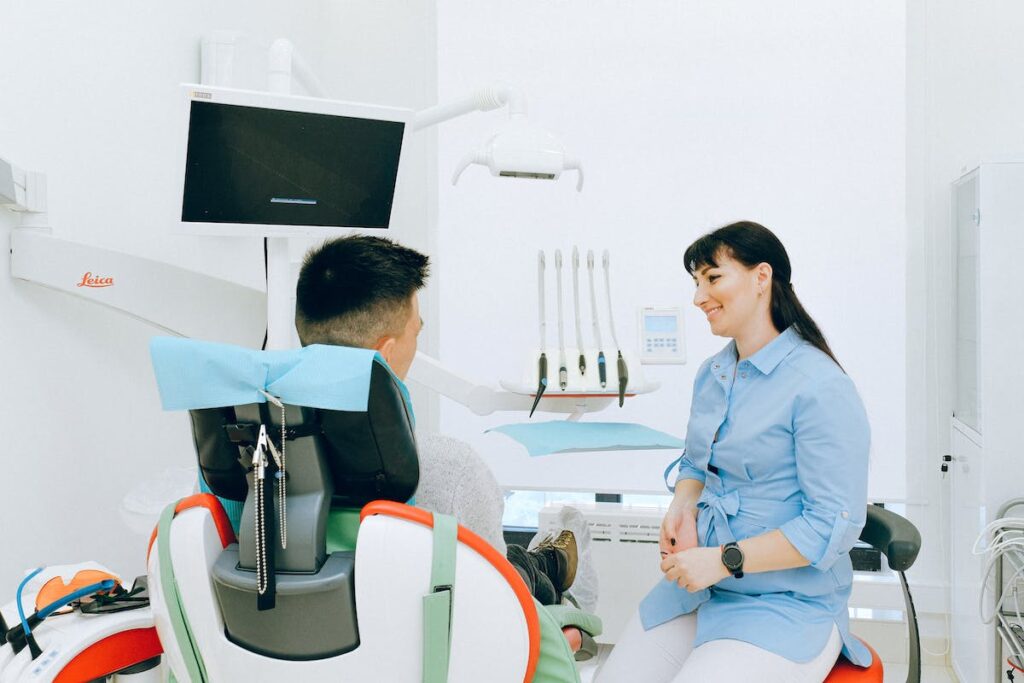
Future of Dental Lab Communication
Future dental lab communication is shaped by advanced technologies and digital platforms for efficient workflows and improved patient outcomes. Smart Dentistry’ is central to this transformation, leveraging technology to enhance dental practices.
Key developments include:
- Real-Time Order Tracking: Advanced systems for tracking orders in real-time increase efficiency and client satisfaction in dental labs.
- AI-Driven Diagnostics: Artificial Intelligence expedites diagnostics with comprehensive, accurate results.
- Smart Dentistry: 3D printing and CAD/CAM technologies revolutionize dental practices, offering precision and customization in dental prosthetics.
- Virtual Consultations: Tele-dentistry enables virtual consultations and remote patient monitoring.
These advancements refine dental care quality and patient experience. The future of dental lab communication, powered by these innovative strategies, is promising.
Best Practices for Status Updates
Automated update systems, timely reports, and accurate information delivery are vital for operational efficiency and increased productivity in dental labs. These practices optimize internal communication and client service.
Utilizing Automated Update Systems
In dental labs, automated update systems bolster efficiency and accuracy, yet they also have potential drawbacks.
- Their use streamlines processes, minimizes manual data entry errors, and improves patient experience.
- Despite this, technical glitches may occur, disrupting operations.
- Regular maintenance and system updates ensure their effective use.
- Though automation enhances efficiency, over-reliance can limit vital human error detection.
Importance of Timely Updates
Timely updates in dental lab tools are crucial for data integrity, treatment accuracy, and seamless collaboration. Real-time tracking of lab orders optimizes workflow and boosts patient satisfaction by preventing potential delays. Timely status updates allow for immediate remedial actions, enhancing efficiency and patient-centric care in modern dental labs.
Ensuring Accurate Information Delivery
For accurate information delivery in dental labs, adhere to these practices:
- Detailed Documentation: Maintain exhaustive records for clarity and precision.
- Instant Reporting: Share updates promptly to minimize misunderstandings.
- Regular Interaction: Engage consistently with teams for unified understanding.
- Digital Integration: Implement digital solutions for error-free, streamlined delivery.
These tactics heighten the quality of information dissemination, fostering a proficient communication network within dental labs. Embracing these practices enhances accuracy and boosts overall operational efficiency.
Frequently Asked Questions
What Are the Benefits of Integrating an Order Tracking System With Other Software Used in a Dental Lab?
Order tracking system integration with dental lab software boosts customization, operational efficiency, and seamless communication. It simplifies workflow and provides real-time updates, improving overall lab performance. This integration reduces challenges and promotes efficient operations.
How Can Dental Labs Ensure the Privacy and Security of Patient Data While Using Tracking Systems?
Patient data privacy in dental lab tracking systems is ensured through data encryption, safeguarding transmission information. Strict patient consent policies further authorize access to sensitive data only.
Are There Any Specific Training Programs for Staff to Effectively Use Order Tracking Systems in Dental Labs?
Yes, training programs are available for effective use of order tracking systems in dental labs. These programs focus on software customization and overcoming employee resistance to technology, thereby improving operations and ensuring patient data security.
How Can Dental Labs Measure the Success or Effectiveness of an Implemented Order Tracking System?
Dental labs gauge the success of an implemented order tracking system through key metrics analysis: tracking challenges reduction, delivery times improvement, errors decrease, and customer satisfaction enhancement. Regular audits affirm system effectiveness and efficiency.
Are There Any Cost-Effective Order Tracking Systems Recommended for Small-Scale Dental Labs?
Indeed, LabStar Software and Magic Touch Software are cost-effective tracking systems beneficial for small-scale dental labs, enhancing efficiency without significant financial investment.
Conclusion
Order tracking and status updates integration in dental labs boosts productivity and efficiency. These tools streamline workflows, enhance communication, and manage dental lab operations effectively. Despite potential challenges in implementation, these technologies will likely form the backbone of future dental lab communication. Therefore, comprehension and application of best practices for status updates are critical for dental laboratories’ sustained growth and success.
